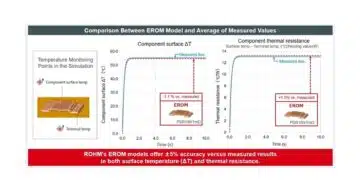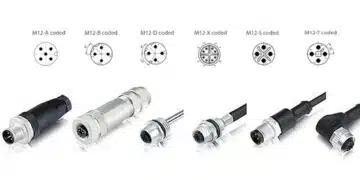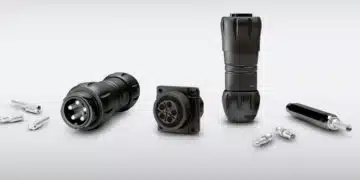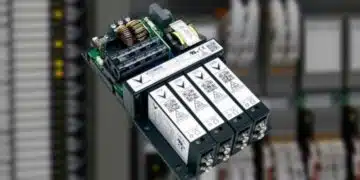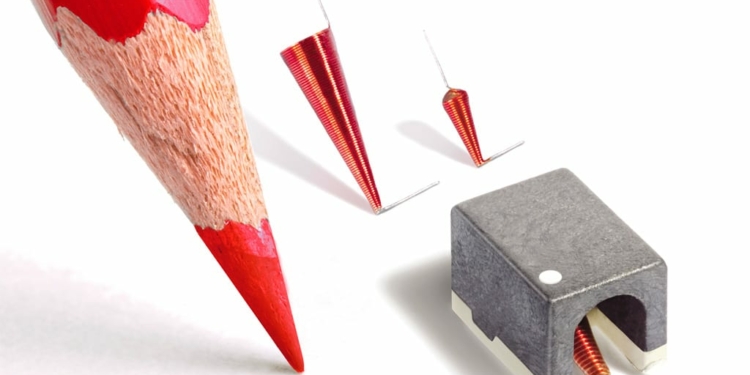Source: Coilcraft article
Chris Hare, Coilcraft describes broadband conical inductors and its function.
What are broadband conical inductors and how do they function?
Off-the-shelf “flying lead” and surface mount broadband conical inductors, Figure 1 and Figure 2, are a special type of broadband RF choke that are used to filter radio frequency (RF) and microwave frequency interference from electronic circuits. At high frequency, the RF choke becomes a high impedance element used to isolate noise or DC from desired signals.

Figure 1 “Flying lead” conical inductor

Figure 2 Surface mount broadband conical inductor
How does a conical inductor function?
An inductor placed in series (in line) with a wire or circuit board trace will impede changes in current, such as AC noise current, by temporarily storing energy in a magnetic field and then releasing it back into the circuit. As current through the inductor changes over time (di/dt) the energy stored in the magnetic field of the inductor creates a voltage (V = L × di/dt) that opposes (impedes) a further change in the current. Regardless of whether the current through the inductor is increasing or decreasing, the magnetic field slows the current’s rate of change. Similar to mechanical energy being damped by a shock absorber, the electrical energy of a noise current “spike” in an RF choke is dispersed over time to reduce its impact. Conical inductors provide high impedance over a very wide range of frequencies.

Figure 3 Conical inductor function
Why does the inductor have a conical shape?
The conical shape limits the effects of stray capacitance and effectively creates a series of narrow band inductors, resulting in high impedance over a very wide bandwidth. A single conical inductor can replace a series of many narrow band inductors.
What applications are appropriate for conical inductors?
- Blocking “noise” in RF circuits
The Federal Communications Commission (FCC) has created standards and certifies electronic devices sold or manufactured in the United States meet the electromagnetic interference (EMI) requirements. Worldwide electromagnetic compatibility (EMC) standards organizations include CISPR, IEC, ISO, and EN. FCC regulations are mandatory and apply to devices such as computer, switched-mode power supplies, television receivers, transmitters, and industrial, scientific, and medical (ISM) devices that emit RF radiation. RF chokes, such as conical inductors, are employed in electrical circuits to reduce EMI by attenuating high-frequency noise in order to meet EMC emission and immunity requirements.
The Federal Communications Commission (FCC) has created standards for, and certifies that, electronic devices sold or manufactured in the United States meet the electromagnetic interference (EMI) requirements. Worldwide electromagnetic compatibility (EMC) standards organizations include CISPR, IEC, ISO, and EN. FCC regulations are mandatory and apply to devices such as computer, switched-mode power supplies, television receivers, transmitters, and industrial, scientific, and medical (ISM) devices that emit RF radiation. RF chokes, such as conical inductors, are employed in electrical circuits to reduce EMI by attenuating high-frequency noise in order to meet EMC emission and immunity requirements.
Isolating RF signals from a DC bias / broadband filtering
A broadband (wideband) conical bias choke placed in line with the DC bias of an amplifier blocks a wide range of high frequencies from reaching the DC source. In this way, the bias choke injects the DC bias while isolating the AC signal from distortion by any stray AC noise. The critical determination when choosing an RF choke for a bias tee is the frequency range that needs to be blocked. Other key parameters are DC resistance, current requirements, size and cost.
article and figures credit: Coilcraft






